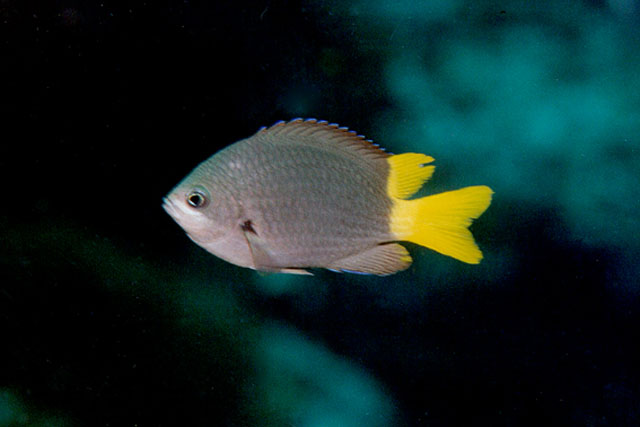| Pomacentridae (Damselfishes), subfamily: Chrominae |
| 7.42 cm SL (male/unsexed) |
|
reef-associated; marine; depth range 10 - 70 m |
| Southwest Atlantic: Brazil. |
|
Dorsal spines (total): 13-13; Dorsal soft rays (total): 11-12; Anal spines: 2-2; Anal soft rays: 9-11; Vertebrae: 23-23. Color black in life, paler ventrally. Caudal peduncle and fin and upper 3/4 of soft dorsal fin yellow; black anal and pelvic fins (some have very small yellow spots on tips of anal rays); transparent or yellowish pectoral fin, with a dark spot at axil; pectoral spot remains visible in preserved specimens. Oblique mouth; a small, opercle with a flat spine posteriorly, aligned with the pupil, its margin smooth with a round corner; lower edge of suborbitals scaled. Tubed lateral line scales, 15-17; pored scales on mid-posterior part of body and caudal peduncle 10-13; branchiostegal rays 6; predorsal bones 3. (Ref. 27310). |
| Adults are found in open areas with great water circulation over rocky bottom; usually in groups, 4-5 m above the substrate, seeking shelter on the bottom when there are predators (Ref. 27310). Maximum depth from Ref. 126840. Oviparous, distinct pairing during breeding (Ref. 205). Eggs are demersal and adhere to the substrate (Ref. 205). Males guard and aerate the eggs (Ref. 205). |
|
Not Evaluated (N.E.) Ref. (130435)
|
| harmless |
Source and more info: www.fishbase.org. For personal, classroom, and other internal use only. Not for publication.

